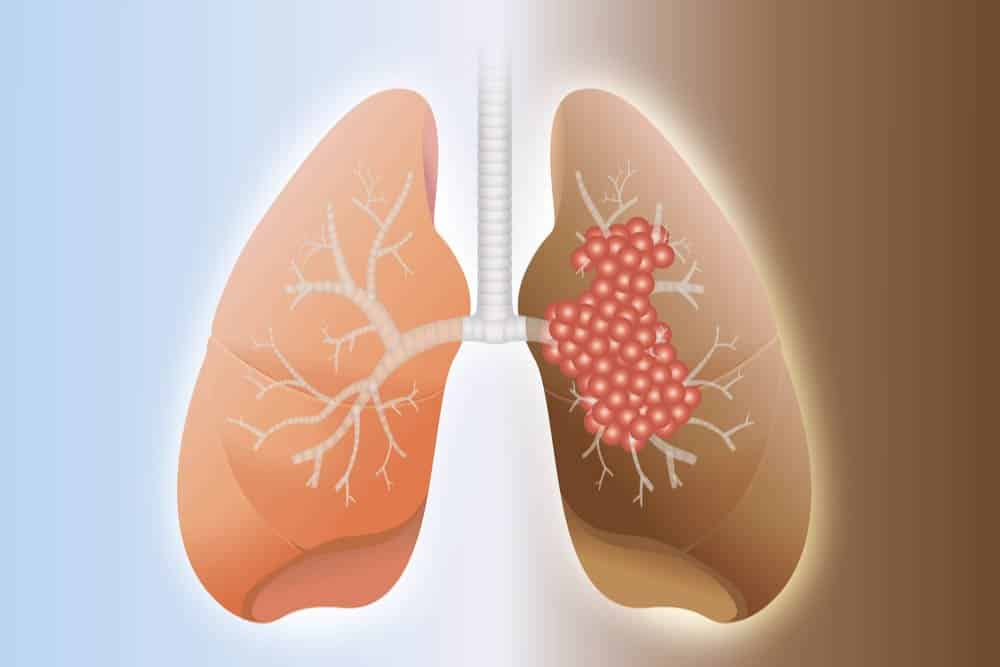The primary function of the lungs is breathing, and mediating the exchange of oxygen and CO2. The left lung is divided by the oblique fissure into an upper and lower lobe. The right lung has three lobes and two fissures. Each lobe is composed of segments with anatomically defined areas, each one with bronchial, pulmonary arterial and venous connections. The right main bronchus is shorter, wider and nearly vertical compared with the left side. Lymph nodes are both named and identified by numbered stations which are of importance in staging lung cancer.
Lung cancer is the leading cause of cancer deaths in both men and women. Cigarette smoking causes 85–90% of cases. The causal connection between cigarettes and lung cancer is established, not only epidemiologically but also through identification of carcinogens in tobacco smoke and direct analysis on the effect of these carcinogens on specific oncogenes expressed in lung cancer.
Other environmental risk factors for the development of lung cancer include exposure to environmental tobacco smoke, radon, asbestos, diesel exhaust, ionizing radiation, metals (arsenic, chromium, nickel, iron oxide), and industrial carcinogens. There’s also a familial predisposition to lung cancer. Certain diseases are associated with an increased risk, including pulmonary fibrosis, chronic obstructive pulmonary disease, and sarcoidosis.
Types of lung cancer

Lung cancers are divided into small cell and non small cell cancer (NSCLC). The pattern of disease , the prognosis and the results of treatment for small cell (oat cell) carcinoma differ from all other types. There are five main histologic categories of bronchogenic carcinoma. Squamous Cell carcinomas arise from the Bronchial epithelium and often present as intraluminal masses. They are usually centrally located and can present with hemoptysis.
Adenocarcinomas (48% of cases) arise from Mucous glands or from any epithelial cell within or distal to the terminal bronchioles. They usually present as peripheral nodules or masses . Adenocarcinomas in situ (formerly bronchioloalveolar cell Carcinomas) spread along preexisting alveolar structures (lepidic growth) without Evidence of invasion.
Large cell carcinomas (1.5% of cases) are a heterogeneous group of undifferentiated cancers that share large cells and do not fit into other Categories. Large cell carcinomas are typically aggressive and have rapid doubling times. They present as central or peripheral masses.
Small cell Carcinomas (13% of cases) are tumors of bronchial origin that typically begin centrally, Infiltrating submucosally to cause narrowing of the bronchus without a discrete luminal Mass. They are aggressive cancers that often involve regional or distant metastasis on Presentation.
Benign tumors of the lung are uncommon and account for fewer than 15 % of solitary lesions seen on chest radiographs. A tumor is likely to be benign if it has not increased in size on chest radiographs for more than 2 years or it has some degree of calcification however a tissue diagnosis is usually pursued. Most benign nodules are granulomas. The most common benign tumor is a hamartoma.

